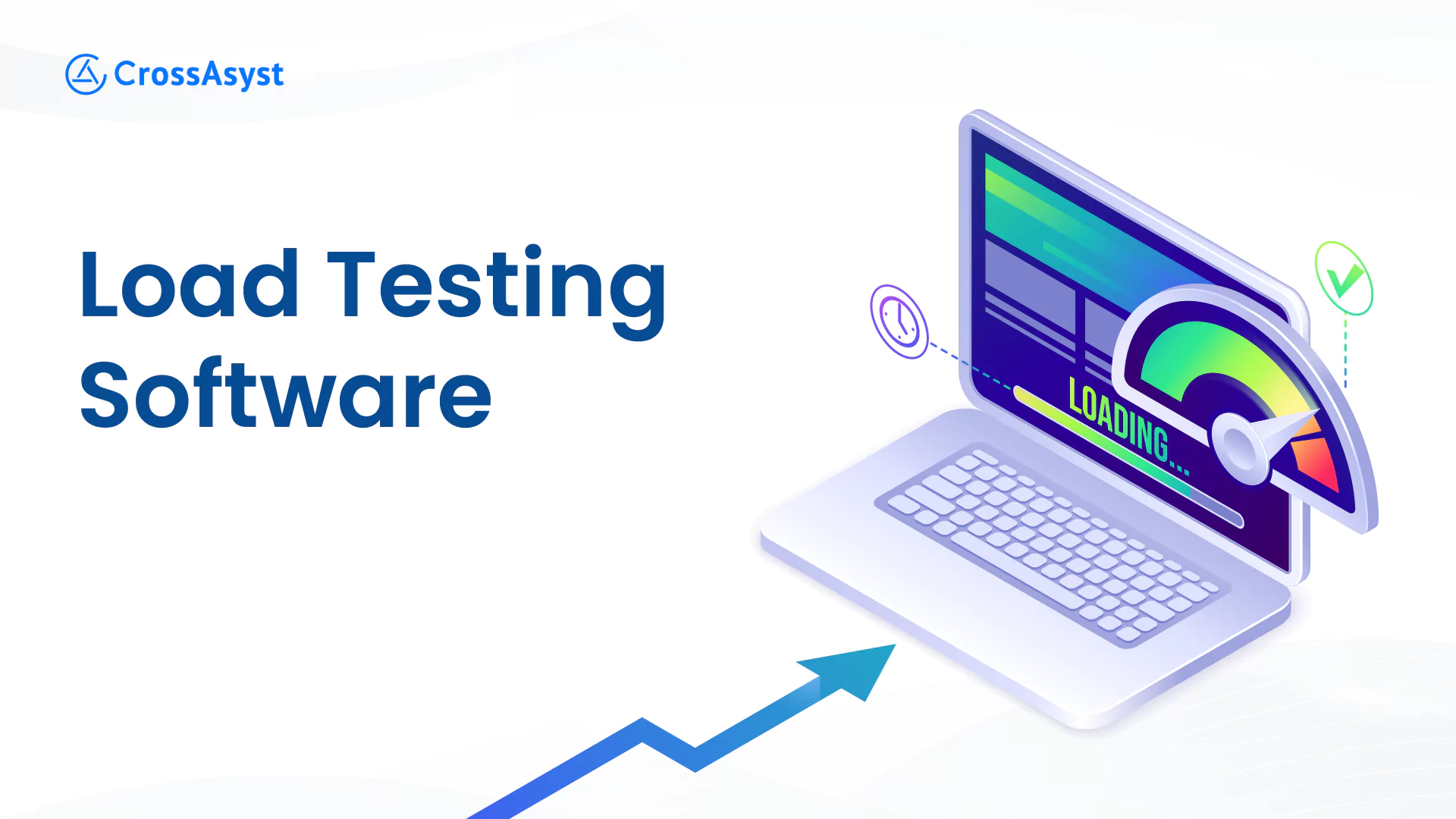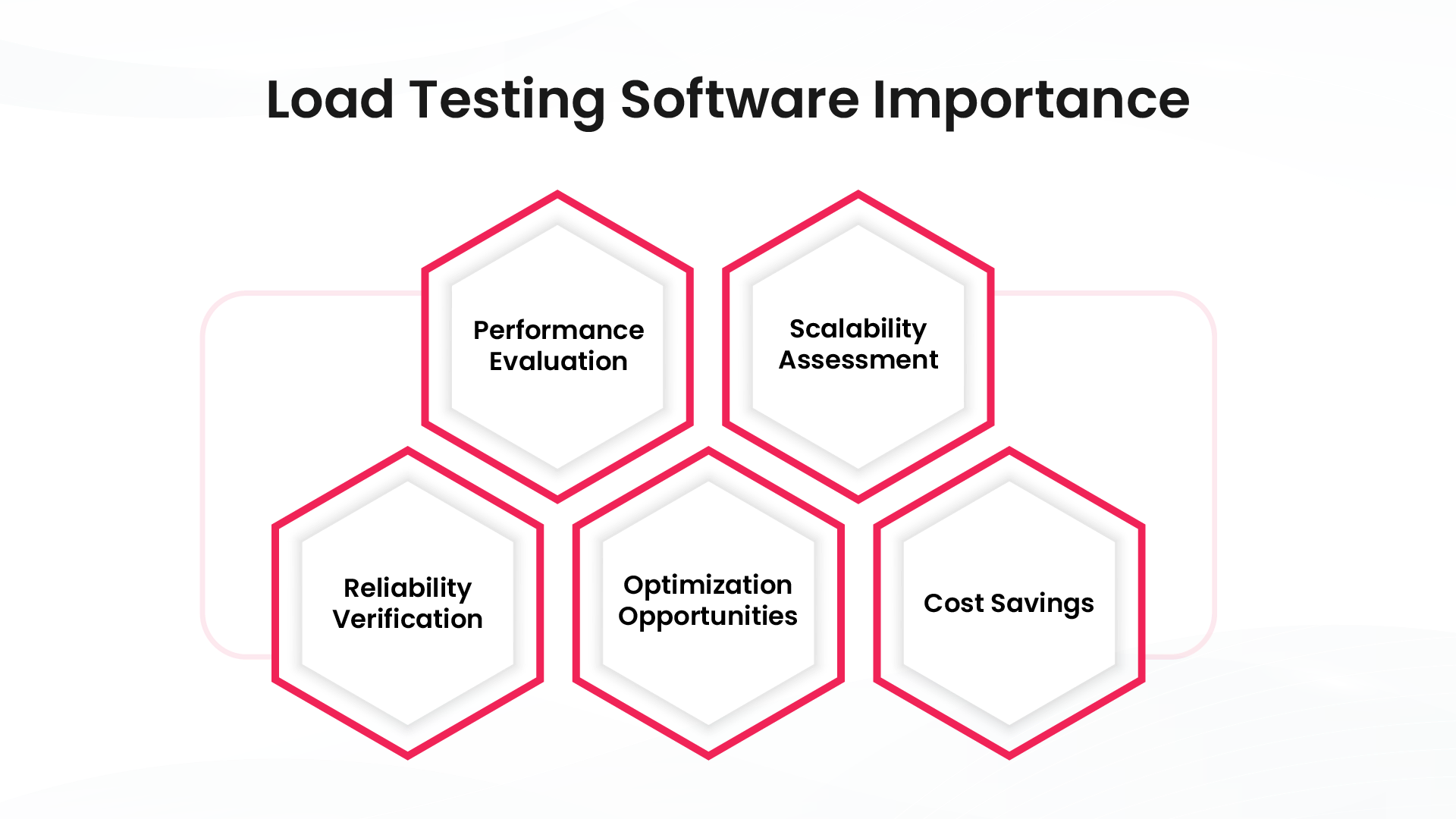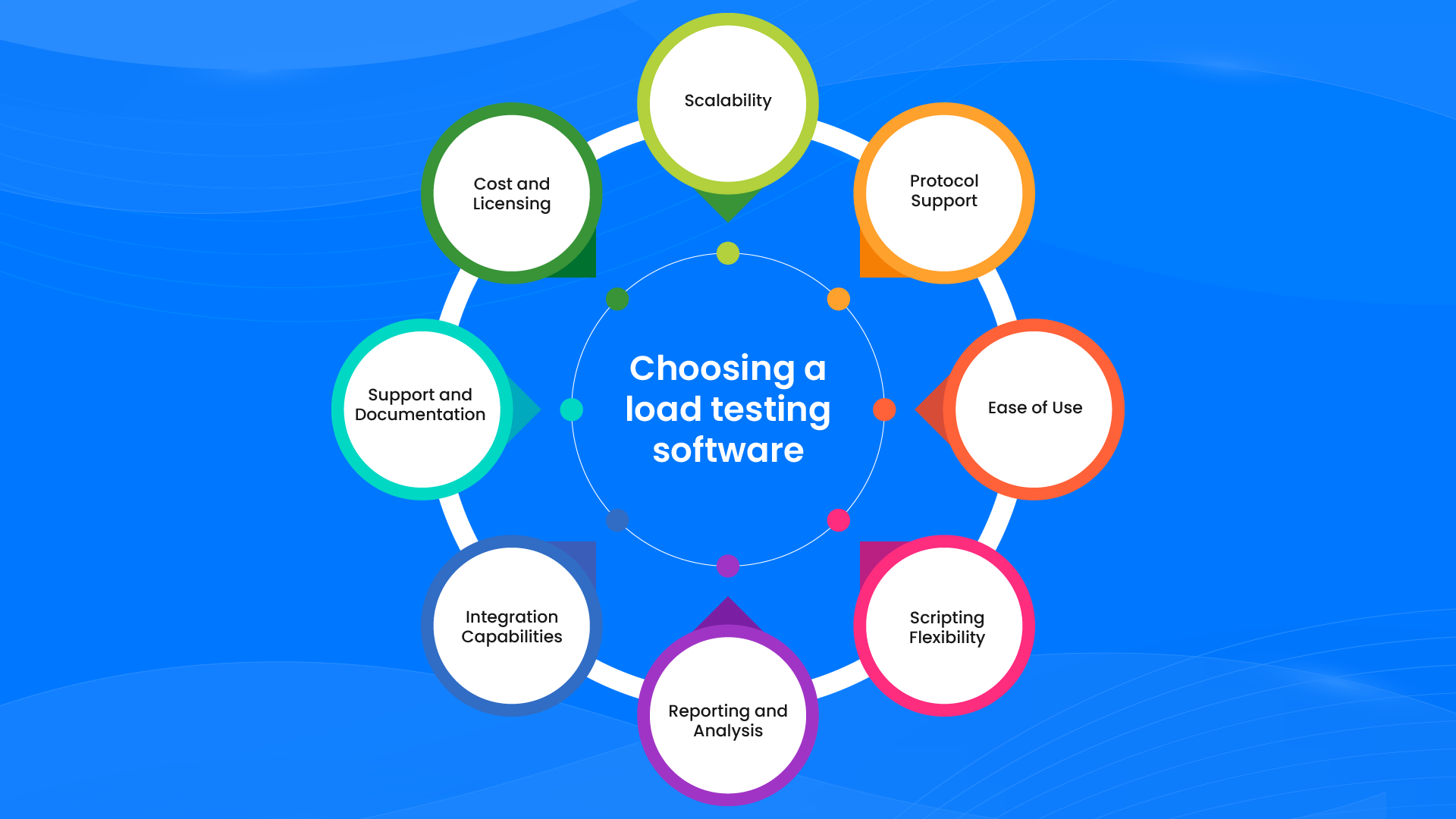If you’re building a new software product, performance testing is going to be one of the top things on your to-do list before the launch, And load testing will be one of the most important components of that performance testing process.
Simply put, load testing puts your application through its paces under normal conditions and peak conditions, and then overloads it to see how much it can take before it succumbs. The purpose of doing this is to make sure your software application performs optimally and meets the goals or objectives defined in the SLAs.
There are a variety of software solutions that are employed for load testing. This article is a comparative look at our picks of the top 5 load testing software.
Table of Contents
What Are Load Testing Software?
Load testing software is a type of application used to simulate and evaluate the performance of a system under varying levels of demand. It assesses how well a software application, website, or network can handle user interactions and data processing during peak usage periods.
By generating simulated user traffic, load testing software helps identify bottlenecks, weaknesses, and potential points of failure within the system. This analysis enables developers and IT professionals to optimize performance, enhance scalability, and ensure reliability before deploying the software or system to production environments.
Load testing software plays a crucial role in guaranteeing the efficiency and stability of digital platforms in real-world conditions.
Why Are Load Testing Software Important?
Load testing software is essential for several reasons. Here’s a quick look at them.
1. Performance Evaluation
It allows developers and IT professionals to assess how well a system performs under various levels of user demand. By simulating realistic user loads, it helps identify performance bottlenecks and areas for improvement.
2. Scalability Assessment
Load testing software helps determine whether a system can handle increased user traffic and data processing as the user base grows. This information is crucial for ensuring that the system can scale effectively without compromising performance.
3. Reliability Verification
By subjecting a system to simulated stress, load testing software helps identify potential points of failure and weaknesses in the infrastructure. This enables developers to address these issues proactively, reducing the likelihood of system crashes or downtime in production environments.
4. Optimization Opportunities
Load testing software provides insights into areas where performance optimization is needed. Developers can use this information to fine-tune code, optimize database queries, and improve resource utilization to enhance overall system efficiency.
5. Cost Savings
Identifying and addressing performance issues early in the development lifecycle can help prevent costly rework and downtime after deployment. Load testing software enables organizations to detect and resolve performance issues before they impact end users, saving both time and resources.
Factors to Consider While Choosing a Load Testing Software
There are 8 key factors that you should consider while choosing a load testing software. Here’s a closer look at each of them.
1. Scalability
Choose a load testing tool that can scale to simulate the expected user load accurately. It should be able to handle large numbers of virtual users and distributed testing environments to accurately mimic real-world scenarios.
2. Protocol Support
Ensure that the load testing software supports the protocols used by your application or system. Whether it’s HTTP, HTTPS, SOAP, REST, or others, compatibility with your technology stack is crucial for accurate testing.
3. Ease of Use
Look for a user-friendly interface and intuitive workflows that streamline the load testing process. The tool should offer features such as script recording, parameterization, and test scenario creation that make it easy for both novice and experienced users to generate and execute tests.
4. Scripting Flexibility
Evaluate the scripting capabilities of the load testing software. It should allow for both recording-based and code-based scripting approaches, providing flexibility for testers to create complex test scenarios and customize test scripts as needed.
5. Reporting and Analysis
Consider the reporting and analysis features offered by the load testing tool. It should provide detailed performance metrics, graphs, and charts that help identify performance bottlenecks and trends. Look for features like real-time monitoring, result comparison, and customizable reports to facilitate comprehensive performance analysis.
6. Integration Capabilities
Check whether the load testing software integrates seamlessly with your existing development and testing tools. Integration with CI/CD pipelines, test management systems, and performance monitoring tools can streamline the testing process and enable efficient collaboration across teams.
7. Support and Documentation
Assess the level of support and documentation provided by the load testing software vendor. Look for comprehensive documentation, tutorials, and user forums that help users get started quickly and troubleshoot issues effectively. Additionally, consider the availability of technical support options, including email support, phone support, and online chat.
8. Cost and Licensing
Evaluate the pricing model and licensing options offered by the load testing software vendor. Consider factors such as upfront costs, subscription fees, and licensing tiers to ensure that the tool aligns with your budget and scalability requirements.
Top 5 Load Testing Software
Our top picks have been analyzed by looking at six factors, namely: User Interface, Scripting capabilities, Load generation options, Advantages, Drawbacks, Pricing, and Best use cases. Let’s now jump into our picks for the top 5 load testing software currently in use.
1. Apache JMeter
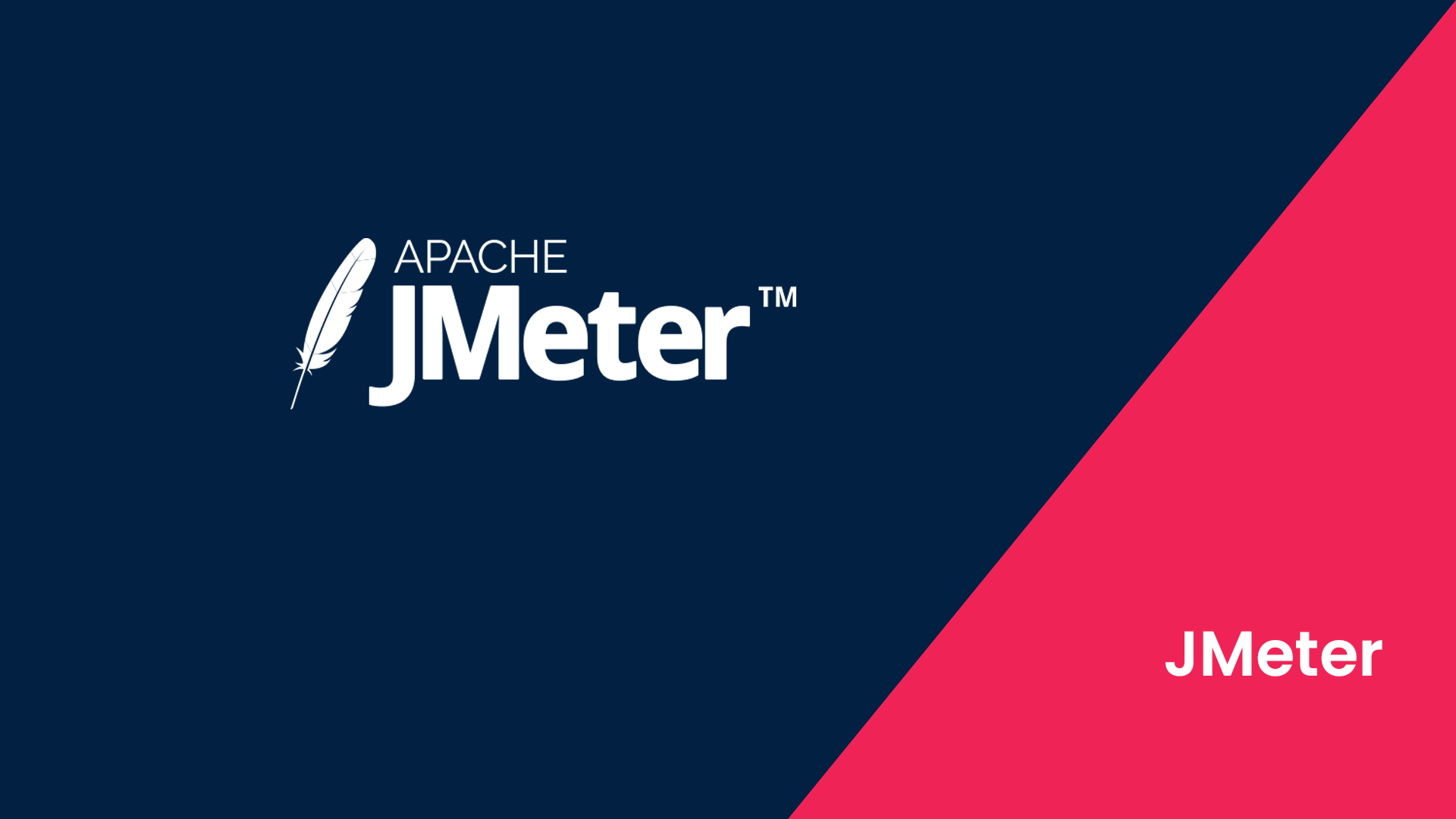 Apache JMeter is a popular open-source load testing software widely used by developers and testers to evaluate the performance of web applications, APIs, and various server protocols. Here’s a detailed overview of Apache JMeter.
Apache JMeter is a popular open-source load testing software widely used by developers and testers to evaluate the performance of web applications, APIs, and various server protocols. Here’s a detailed overview of Apache JMeter.
User Interface
Apache JMeter offers a user-friendly and intuitive interface that facilitates the creation, configuration, and execution of load tests. The GUI (Graphical User Interface) provides a range of tools and options for building test plans, defining test scenarios, and monitoring test results.
It features a tree-based structure that organizes test elements such as Thread Groups, Samplers, Logic Controllers, and Listeners, making it easy to navigate and manage complex test setups.
Scripting Capabilities
Apache JMeter provides robust scripting capabilities for creating and customizing test scenarios. Users can utilize JMeter’s built-in recording feature to capture HTTP or HTTPS requests made by a web browser and convert them into test scripts.
Additionally, JMeter supports scripting languages like Groovy and JavaScript, allowing testers to write custom logic, assertions, and preprocessors to enhance test scripts’ functionality.
Load Generation Options
Apache JMeter offers flexible load generation options to simulate various types of user behavior and traffic patterns. Users can configure Thread Groups to define the number of virtual users (threads) and their ramp-up periods, enabling gradual increases in load over time.
JMeter supports distributed testing, allowing multiple JMeter instances to run tests simultaneously across different machines to generate higher loads and distribute the testing workload effectively.
Advantages
- Open-source and freely available, making it accessible to developers and organizations of all sizes.
- Versatile and supports a wide range of protocols including HTTP, HTTPS, FTP, JDBC, SOAP, REST, JMS, LDAP, and more.
- Extensible architecture with a vast ecosystem of plugins and extensions for additional functionality and integrations.
- Platform-independent, runs on various operating systems including Windows, macOS, and Linux.
- Comprehensive reporting and analysis capabilities, with built-in listeners and reporting tools to analyze test results in real-time or generate customizable reports.
Drawbacks
- Steeper learning curve for beginners due to its extensive feature set and configuration options.
- GUI can become sluggish and unresponsive when handling large test plans or heavy loads.
- Limited support for scripting languages other than Groovy and JavaScript.
Pricing
Apache JMeter is open-source software distributed under the Apache License 2.0, which means it is free to download, use, and modify without any licensing fees or restrictions.
Best Use Cases
- Performance testing of web applications, APIs, and web services to evaluate their response times, throughput, and scalability under various load conditions.
- Stress testing to determine a system’s stability and reliability by subjecting it to high loads beyond its capacity.
- Load testing of backend databases, servers, and infrastructure components to identify performance bottlenecks and optimize resource utilization.
- Integration testing to validate the interoperability and performance of interconnected systems, services, and components.
- Continuous integration and delivery (CI/CD) pipelines to automate load testing as part of the software development lifecycle and ensure application performance and reliability.
2. LoadRunner
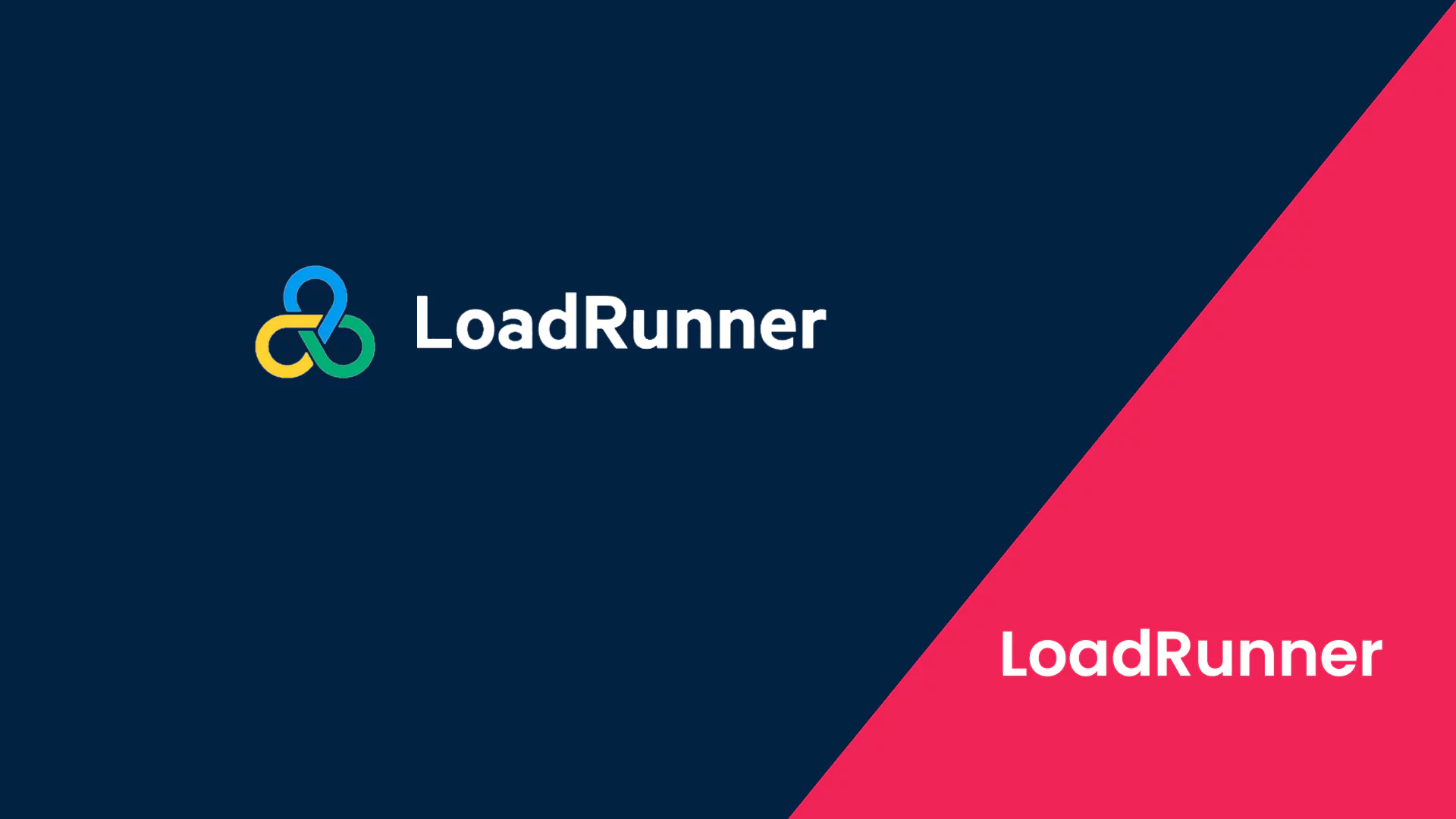
LoadRunner, developed by Micro Focus, is a comprehensive load testing software widely recognized for its robust features and capabilities. Let’s delve into its capabilities.
User Interface
LoadRunner provides a user-friendly interface that facilitates the creation, execution, and analysis of load tests. The interface is organized into modules, including Virtual User Generator (VuGen) for creating test scripts, Controller for managing test scenarios and load distribution, and Analysis for analyzing test results.
Its intuitive layout and navigation make it suitable for both novice and experienced users.
Scripting Capabilities
LoadRunner offers powerful scripting capabilities through its VuGen module. Users can create test scripts using multiple scripting languages, including C, Java, and JavaScript. VuGen provides a variety of recording options, allowing testers to record user interactions with web applications, mobile apps, and protocols like HTTP, SOAP, and Oracle NCA.
Additionally, VuGen supports parameterization, correlation, and custom coding to enhance script functionality and realism.
Load Generation Options
LoadRunner supports various load generation options to simulate realistic user behavior and workload scenarios. Users can configure Virtual User (Vuser) profiles to define user actions, concurrency levels, and pacing for load tests.
LoadRunner supports both centralized and distributed load generation, enabling users to scale up load testing efforts by distributing Vusers across multiple load generators and network topologies.
Advantages
- Comprehensive protocol support, including HTTP, HTTPS, WebSockets, SOAP, REST, Citrix, Oracle Forms, and more, making it suitable for testing a wide range of applications and technologies.
- Advanced workload modeling capabilities, allowing users to emulate complex user behavior, think times and transaction mixtures to simulate real-world usage patterns accurately.
- Integration with other Micro Focus tools like ALM (Application Lifecycle Management) and Performance Center for seamless test management, collaboration, and reporting.
- Robust monitoring and diagnostics capabilities, including real-time performance metrics, transaction breakdowns, and system resource monitoring, to identify performance bottlenecks and troubleshoot issues effectively.
- Extensive reporting and analysis features, with customizable dashboards, graphs, and drill-down reports to visualize test results, trends, and metrics for informed decision-making.
Drawbacks
- High licensing costs and complex pricing models, making it less accessible for small and mid-sized organizations with budget constraints.
- Steeper learning curve compared to some other load testing tools, requiring training and expertise to leverage its capabilities fully.
- Resource-intensive installation and setup process, particularly for large-scale deployments and distributed testing environments.
Pricing
LoadRunner pricing varies based on factors such as the number of Virtual Users (Vusers), protocols, and additional features required. Micro Focus offers both perpetual and subscription-based licensing options, with pricing tailored to the specific needs and scale of the organization.
Best Use Cases
- Performance testing of web applications, mobile apps, client-server applications, and enterprise systems to evaluate scalability, reliability, and responsiveness under various load conditions.
- Stress testing to determine system stability and resilience by subjecting it to high loads, peak traffic, and adverse conditions.
- Capacity planning and infrastructure optimization to identify performance bottlenecks, resource constraints, and scalability limits before production deployment.
- Integration testing to validate interoperability, data exchange, and performance across interconnected systems, APIs, and third-party services.
- Continuous testing and monitoring as part of DevOps and CI/CD pipelines to ensure application performance, reliability, and user satisfaction throughout the software delivery lifecycle.
3. BlazeMeter
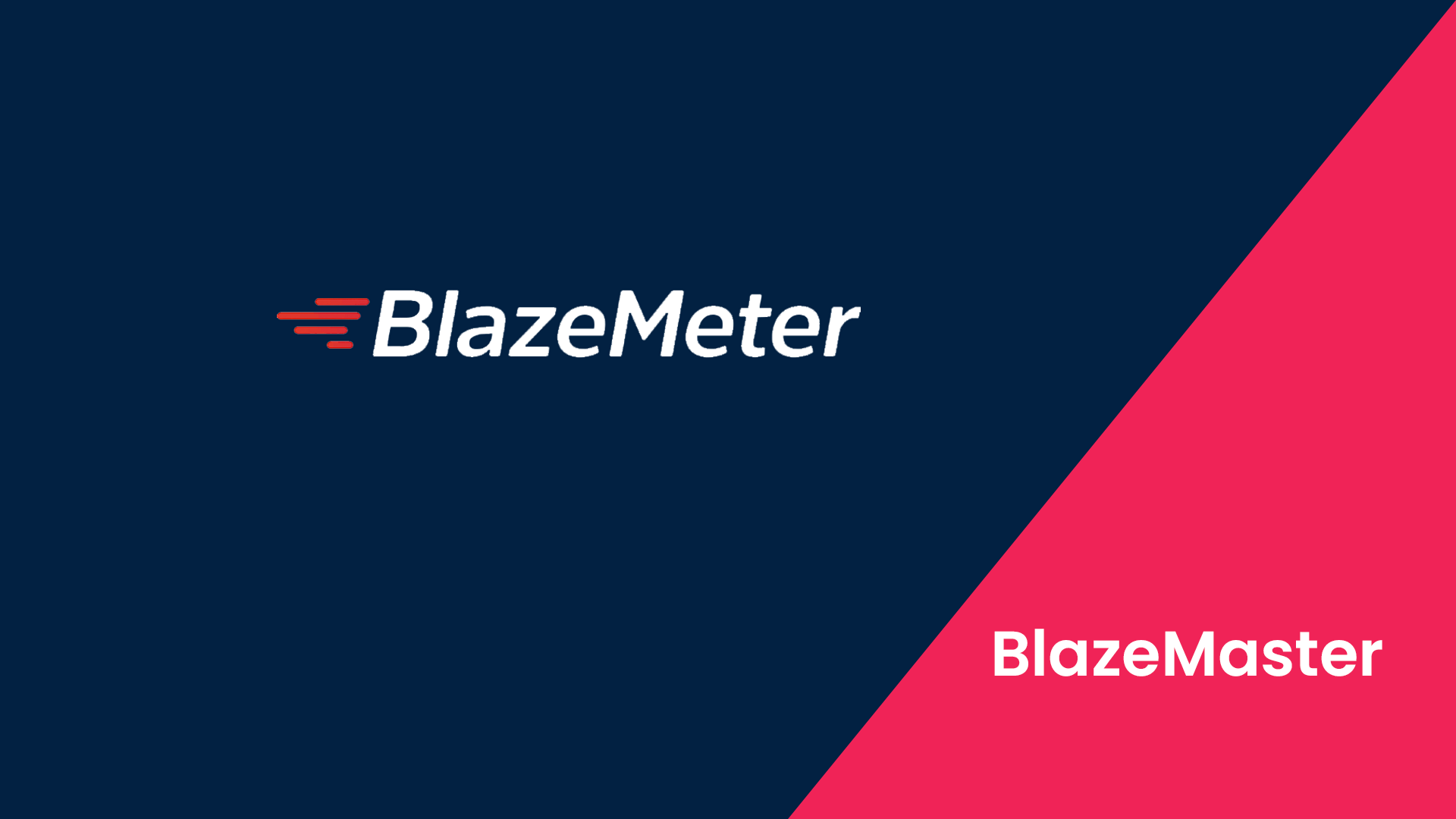
BlazeMeter is a cloud-based load testing platform designed to help developers and QA professionals conduct performance testing and ensure the scalability and reliability of their web and mobile applications. Here’s a detailed overview covering its key capabilities.
User Interface
BlazeMeter offers an intuitive and user-friendly web-based interface that simplifies the load testing process. The platform features a drag-and-drop test builder, allowing users to easily create and configure test scenarios without requiring extensive scripting knowledge.
The interface provides real-time test monitoring, customizable dashboards, and interactive reports, making it easy to analyze performance metrics and identify bottlenecks.
Scripting Capabilities
BlazeMeter provides flexible scripting capabilities for creating and customizing test scenarios. Users can leverage popular scripting languages like JMeter, Gatling, and Selenium to develop test scripts tailored to their specific requirements.
Additionally, BlazeMeter offers a recording feature that allows users to capture user interactions with their applications and automatically generate test scripts, simplifying the script creation process.
Load Generation Options
BlazeMeter offers versatile load generation options to simulate realistic user behavior and traffic patterns. Users can configure virtual user profiles to define parameters such as concurrency levels, ramp-up periods, and distribution across different geographic regions.
The platform supports distributed testing, allowing users to scale up load testing efforts by leveraging multiple cloud-based load generators located in different regions.
Advantages
- Cloud-based architecture eliminates the need for provisioning and managing on-premises infrastructure, enabling users to quickly spin up and scale load tests as needed.
- Seamless integration with popular CI/CD tools like Jenkins, Bamboo, and TeamCity, allowing users to automate load testing as part of their continuous integration and delivery pipelines.
- Advanced reporting and analytics capabilities, including real-time performance metrics, trend analysis, and drill-down reports, enabling users to identify performance issues and optimize application performance effectively.
- Support for a wide range of protocols and technologies, including HTTP, HTTPS, WebSockets, REST, SOAP, and more, making it suitable for testing various types of web and mobile applications.
- Flexible pricing options, including pay-as-you-go and subscription-based plans, catering to the needs and budget constraints of different organizations.
Drawbacks
- Dependency on internet connectivity and cloud infrastructure may introduce latency and variability in test results, particularly for users in regions with limited network bandwidth or connectivity issues.
- Limited scripting capabilities compared to some standalone load testing tools, potentially restricting customization and advanced scripting requirements.
Pricing
BlazeMeter offers flexible pricing plans based on usage, with options for pay-as-you-go pricing and subscription-based plans. Pricing is based on factors such as the number of virtual users, test duration, and additional features required.
The platform offers a free tier with limited features for small-scale testing. Their Basic package costs $99 a month. For $499 a month, you get access to their Pro package, while you will need to contact them for their Unleashed package.
Best Use Cases
- Performance testing of web and mobile applications to evaluate scalability, responsiveness, and reliability under various load conditions.
- Stress testing to determine system stability and resilience by subjecting applications to high traffic volumes and adverse conditions.
- Continuous testing and monitoring as part of DevOps and CI/CD pipelines to ensure application performance and reliability throughout the software development lifecycle.
- Capacity planning and optimization to identify performance bottlenecks and scale resources proactively based on anticipated user demand.
4. NeoLoad

NeoLoad is a robust load testing software developed by Neotys(now known as Tricentis), designed to help organizations assess and optimize the performance of their web and mobile applications. Here’s a detailed overview covering its key aspects:
User Interface
NeoLoad offers an intuitive and modern user interface that streamlines the load testing process. The interface is organized into modules for creating, configuring, executing, and analyzing load tests.
Its graphical interface provides drag-and-drop functionality, customizable dashboards, and real-time monitoring, allowing users to easily navigate through test scenarios, monitor performance metrics, and analyze test results.
Scripting Capabilities
NeoLoad provides powerful scripting capabilities for creating and customizing test scenarios. Users can leverage the platform’s advanced recording and scripting features to capture user interactions with their applications and generate test scripts automatically. Additionally, NeoLoad supports JavaScript-based scripting for more complex scenarios, enabling users to incorporate custom logic, assertions, and dynamic data handling into their test scripts.
Load Generation Options
NeoLoad offers versatile load generation options to simulate realistic user behavior and traffic patterns. Users can define virtual user profiles to simulate different types of users, actions, and concurrency levels.
The platform supports distributed testing, allowing users to distribute load generators across multiple geographic locations to simulate diverse user populations and network conditions accurately.
Advantages
- Advanced workload modeling capabilities, including user journey design, think time customization, and dynamic parameterization, enabling users to simulate real-world usage scenarios accurately.
- Built-in support for a wide range of protocols and technologies, including HTTP, HTTPS, WebSockets, SOAP, REST, and more, making it suitable for testing various types of web and mobile applications.
- Comprehensive reporting and analysis features, including customizable dashboards, graphs, and drill-down reports, enabling users to visualize performance metrics, identify bottlenecks, and make data-driven decisions.
- Seamless integration with popular CI/CD tools like Jenkins, TeamCity, and Bamboo, enabling users to automate load testing as part of their continuous integration and delivery pipelines.
- Cloud-based load testing capabilities, allowing users to leverage cloud infrastructure for on-demand scalability and flexibility without the need for provisioning and managing on-premises hardware.
Drawbacks
- Steeper learning curve compared to some other load testing tools, requiring training and expertise to fully leverage its capabilities.
- Limited support for scripting languages other than JavaScript, potentially restricting customization and advanced scripting requirements.
- Higher pricing compared to some open-source and entry-level load testing tools, making it less accessible for small and mid-sized organizations with budget constraints.
Pricing
NeoLoad offers flexible pricing plans based on usage, with options for pay-as-you-go and subscription-based plans. Pricing is based on factors such as the number of virtual users, test duration, and additional features required.
Best Use Cases
- Performance testing of web and mobile applications to evaluate scalability, responsiveness, and reliability under various load conditions.
- Stress testing to determine system stability and resilience by subjecting applications to high traffic volumes and adverse conditions.
- Continuous testing and monitoring as part of DevOps and CI/CD pipelines to ensure application performance and reliability throughout the software development lifecycle.
- Capacity planning and optimization to identify performance bottlenecks and scale resources proactively based on anticipated user demand.
5. WebLOAD
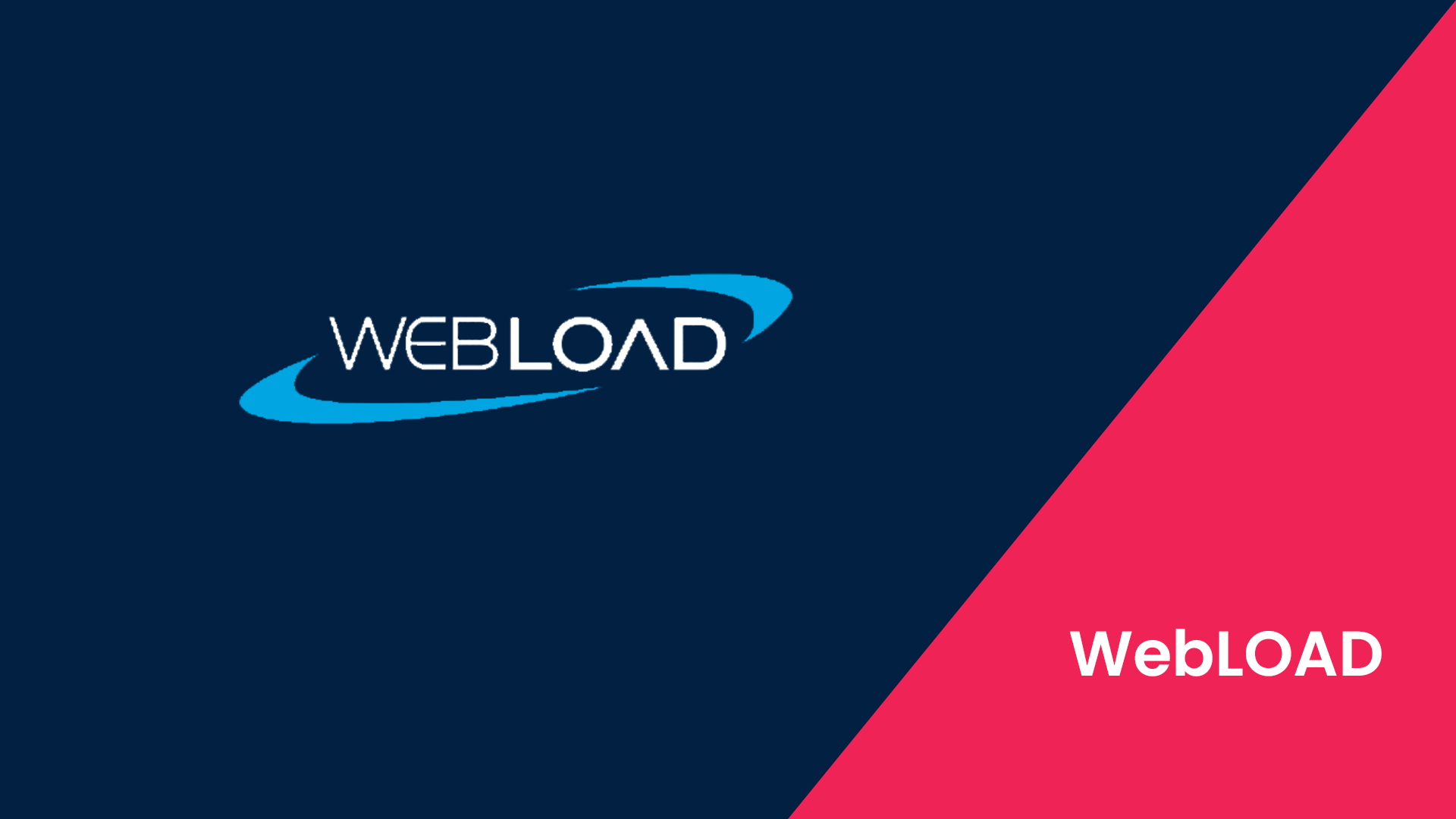
WebLOAD is a powerful load testing software developed by RadView Software, designed to help organizations assess and optimize the performance of their web and mobile applications. Here’s a detailed overview covering its key features.
User Interface
WebLOAD offers an intuitive and user-friendly interface that simplifies the load testing process. The interface is organized into modules for creating, configuring, executing, and analyzing load tests. Its graphical interface provides easy navigation, drag-and-drop functionality, and customizable dashboards, allowing users to efficiently manage test scenarios, monitor performance metrics, and analyze test results in real-time.
Scripting Capabilities
WebLOAD provides robust scripting capabilities for creating and customizing test scenarios. Users can leverage the platform’s JavaScript-based scripting engine to develop test scripts tailored to their specific requirements.
WebLOAD offers a variety of recording options, allowing users to capture user interactions with their applications and generate test scripts automatically. Additionally, WebLOAD supports parameterization, correlation, and dynamic data handling to enhance script functionality and realism.
Load Generation Options
WebLOAD offers flexible load generation options to simulate realistic user behavior and traffic patterns. Users can define virtual user profiles to simulate different types of users, actions, and concurrency levels.
The platform supports distributed testing, enabling users to distribute load generators across multiple geographic locations to simulate diverse user populations and network conditions accurately.
Advantages
- Advanced workload modeling capabilities, including user scenario design, think time customization, and dynamic correlation, enabling users to simulate complex real-world usage scenarios accurately.
- Comprehensive protocol support, including HTTP, HTTPS, WebSockets, SOAP, REST, and more, making it suitable for testing various types of web and mobile applications.
- Scalability and flexibility, with support for cloud-based load testing using platforms like Amazon Web Services (AWS), Microsoft Azure, and Google Cloud Platform (GCP), enabling users to leverage cloud infrastructure for on-demand scalability and resource management.
- Comprehensive reporting and analysis features, including customizable dashboards, graphs, and drill-down reports, enabling users to visualize performance metrics, identify bottlenecks, and make data-driven decisions.
- Seamless integration with popular CI/CD tools like Jenkins, TeamCity, and Bamboo, enabling users to automate load testing as part of their continuous integration and delivery pipelines.
Drawbacks
- Steeper learning curve than certain load testing tools, demanding training and expertise to harness its full capabilities.
- Limited support for scripting languages other than JavaScript, potentially restricting customization and advanced scripting requirements.
- Higher pricing compared to some open-source and entry-level load testing tools, making it less accessible for small and mid-sized organizations with budget constraints.
Pricing
WebLOAD offers three pricing options: On-Demand (free), Subscription ($129 a month), and Enterprise, which offers custom pricing based on factors including features needed, number of virtual users, and test durations.
Best Use Cases
- Performance testing of web and mobile applications to evaluate scalability, responsiveness, and reliability under various load conditions.
- Stress testing to determine system stability and resilience by subjecting applications to high traffic volumes and adverse conditions.
- Continuous testing and monitoring as part of DevOps and CI/CD pipelines to ensure application performance and reliability throughout the software development lifecycle.
- Capacity planning and optimization to identify performance bottlenecks and scale resources proactively based on anticipated user demand.
Load Test Your New Software With Crossasyst’s Best Practices
With more than a decade of experience in custom software development, we at CrossAsyst understand the importance of meticulous load testing. Our skilled testing team is well versed in using JMeter, LoadRunner, and BlazeMeter, three of the industry’s top load testing software.
Our QA and testing prowess goes beyond load testing to include performance testing, data testing, QA security testing, software compliance testing, web app testing, mobile app testing, APQ testing as well as code management and CI/CD services.
To learn more about why CrossAsyst is the custom software development company that global leaders chose to partner with, get in touch with our team today.
